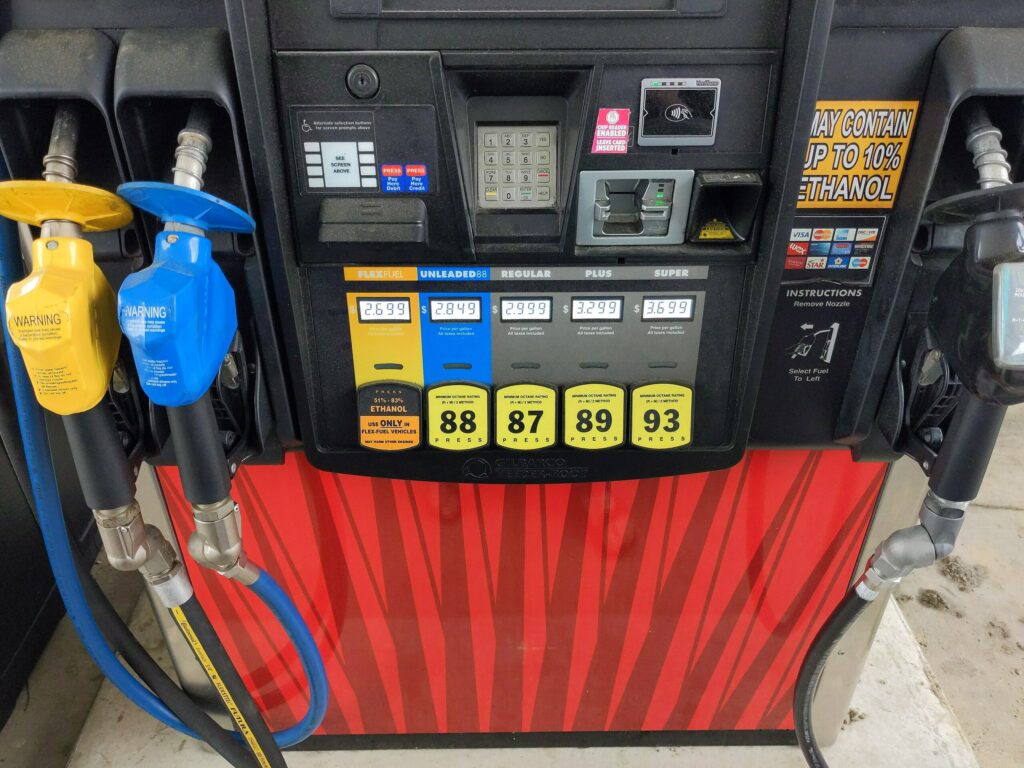
That bargain “Unleaded 88” you’ve been pumping? It’s not the gasoline your equipment was designed for. You’re actually filling up with E15—a blend containing 15% ethanol that can wreck everything from your lawnmower to your boat engine. While gas stations tout the lower price, they’re not mentioning the potential repair bills.
What You’re Really Buying at the Pump
E15 masquerades as regular unleaded but carries serious compatibility restrictions.
According to the U.S. EPA’s Alternative Fuels Data Center, E15 contains 15% ethanol mixed with 85% conventional gasoline, marketed as “Unleaded 88” to attract price-conscious drivers. The EPA approved it for 2001 and newer light-duty vehicles only—meaning your motorcycle, boat, lawnmower, chainsaw, or classic car isn’t cleared for this fuel.
Yet pump labels often bury this critical information in fine print, like those streaming service terms you never read. Many drivers remain unaware that “Unleaded 88” contains ethanol at all, accidentally damaging equipment not designed for alcohol-blended fuels.
Small Engines and Non-Approved Equipment Face Significant Risks
Ethanol’s chemical properties actively attack non-automotive engines and fuel systems.
University of Michigan engineering research shows that ethanol is hydrophilic, meaning it absorbs water from the air and causes fuel separation in your tank. This corrodes rubber seals, dissolves plastic components, and clogs fuel filters in small engines.
Your weekend warrior boat or trusty riding mower faces deteriorating fuel lines, damaged carburetors, and costly repairs. Carburetor replacement alone runs $200-400 for most small engines—repairs that manufacturers explicitly exclude from warranty coverage when you use E15 in non-approved equipment.
The Price Deception That’s Costing You
Lower pump prices mask expensive long-term consequences and reduced fuel economy.
The U.S. Energy Information Administration confirms that ethanol contains approximately 76,000 BTU per gallon versus gasoline’s 114,000 BTU per gallon—a 33% energy deficit that immediately cuts your fuel economy. That “savings” at the pump vanishes when you’re burning more fuel and facing equipment repairs.
Major engine manufacturers void warranties for E15 damage in non-approved applications, leaving you holding the bill for preventable problems. Your bargain fuel becomes expensive fast when repair costs outweigh any pump savings.
Marketing Ambiguity Creates Consumer Risk
Fuel labeling terminology obscures what you’re actually purchasing and its limitations.
The “Unleaded 88” marketing term creates confusion about ethanol content and compatibility restrictions. Gas stations price E15 lower because it costs less to produce, but pump signage rarely emphasizes the equipment limitations in bold, clear text.
This labeling ambiguity leaves consumers vulnerable to accidental damage when they assume all “unleaded” fuel works the same way in all gasoline-powered equipment.
Check your equipment manuals before choosing fuel. Look for clear “E10 Maximum” or “No Ethanol” labels on your gear. When price seems too good to be true at the pump, read the fine print—your equipment’s life hangs in the balance.
Last modified: November 22, 2025







